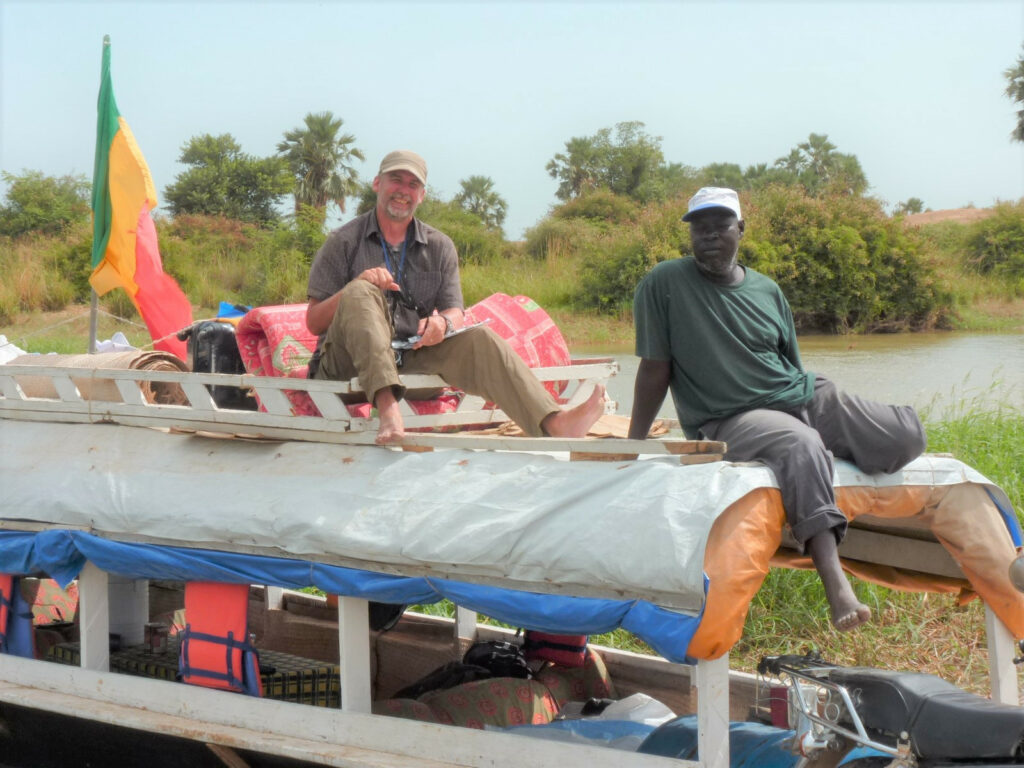Our April profile story features Geography Professor Matt Turner (he/him). Matt has been at UW-Madison since 1995, receiving a Ph.D. from the University of California-Berkeley in 1992. While at UW-Madison, Matt has taught multiple courses including: Global Poverty: Cross-cultural Perspectives (Interdisciplinary L&S 106), Environmental Conservation (Geography/EnvSt 339), Africa South of the Sahara (Geography 355), Culture and Environment (Geography/EnvSt 537), Geographical Inquiry and Analysis (Geography 766). We hope you enjoy learning something new about Professor Turner below!
1. Can you describe your research and the work that you do within the Geography discipline?

I am a people-and-environment geographer and work in semi-arid regions of West Africa. My work revolves around the relationships among environmental governance, poverty, social justice, and environmental change. The region where I work is one of the poorest in the world (by any measure) and one that has experienced significant changes tied to global climate change exacerbating the challenges that farmers and pastoralists face. As a people-and-environment geographer, my work cuts across social (political ecology, agrarian political economy) and biophysical sciences (vegetation ecology, soil fertility) using a mix of quantitative and qualitative methods. Current and recent projects include: gender dimensions of food insecurity, factors contributing to Trans-Saharan migration, pastoral movements and protected area management in Chad; and the relationship between climate change and conflict in the country of Mali.
2. How did you become interested in Geography? What specifically drew you to the discipline?
This is a long story but I will keep it short. All of our majors are way ahead of the game than me! Despite searching for a discipline or an approach that would allow me to integrate social and biophysical processes, I was not exposed to Geography except for a high school version of memorizing countries, their capitals and their major exports. It was only after two M.S. degrees and entering an interdisciplinary environmental studies Ph.D. program did I find myself at a university with a Geography department. My major Ph.D. advisor was a Geographer but I do not hold a degree in Geography! It is this personal history that has made me a strong advocate for a geographical approach to address the complex environmental questions we face.
3. What is something that an undergraduate student has taught you?
I learn so much from undergraduate students so it is difficult to name one thing that I have learned from a particular undergraduate. It is interacting with students that I most missed during the COVID pandemic and this is not just missing social interaction but missing the joint learning that comes from different people, with different backgrounds and interests, reacting to and thinking about a common set of material (an event, a reading, a video).
4. If you could sit in on any course/seminar in the Geography Department, what would you be most interested in attending and why?
Wow, there are so many since we have such interesting courses and great teachers in our department. In addition, given my history, I have gaps in my geographical knowledge. I was able to take a GIS class and have continued to develop my skills in GIS and remote sensing but I have never had a cartography class and would benefit greatly from taking one (e.g. 370). In physical geography, I would love to sit in on two courses with which my own work intersects: Global Warming: Science and Impacts (332) and Environmental Biogeography (338). I would also like to take Economic geography (510) and Power, place, and identity (518) as well as within my own subarea: Environmental governance: Markets, states and nature (534) and The Making of the American Landscape (469). Maybe when I retire, you will see me in these as an elderly auditor!
5. What is your favorite room/other space in Science Hall?
I love Science Hall with all of its quirks and funkiness. Its quirks require one to adapt and learn about its places in ways that more finished and modern spaces don’t. Admittedly, adaptation involves struggle. I have learned to leap “gracefully” from the platform in Room 444 after falling once giving a lecture (I roam when I lecture). As for favorite places in Science Hall, there are many nooks and crannies but I would have to say in terms of sheer beauty and light, I would have to go with the large open spaces of the Map Library and (old) Geography Library.
Special thanks again to Matt Turner for taking time to respond so thoughtfully to our questions.



